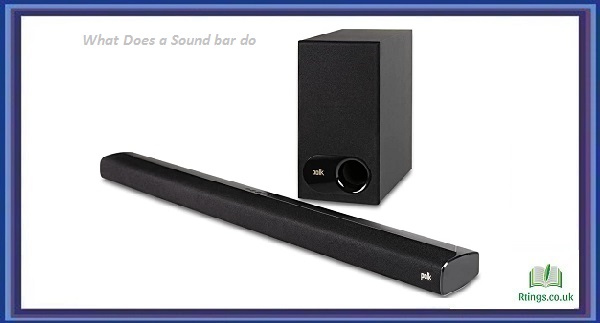Connecting a Bose soundbar to your TV can greatly enhance your audio experience by delivering high-quality sound and immersive audio. Whether you’re a tech-savvy individual or a novice, setting up this connection is a straightforward process that requires minimal effort. This guide will walk you through the steps to connect your Bose soundbar to your TV, ensuring you get the best audio experience possible.
Before you begin, ensure you have the necessary components and cables ready. Depending on the available ports on your TV and soundbar, you’ll likely need an HDMI cable, an optical cable, or an AUX cable. Check the user manuals of both your TV and Bose soundbar to determine the appropriate type of connection.
Identify Ports and Cables
Start by identifying the available ports on both your TV and Bose soundbar. Commonly used ports include HDMI, optical, and AUX. HDMI is preferable as it supports audio and video transmission through a single cable, ensuring high-quality audio. However, if your TV lacks an HDMI ARC (Audio Return Channel) port, you can opt for optical or AUX connections.
HDMI Connection (Recommended)
Locate the HDMI ARC (Audio Return Channel) port on your TV. It is usually labeled as “HDMI ARC” or “ARC.”
Connect one end of the HDMI cable to the HDMI ARC port on your TV.
Connect the other end of the HDMI cable to the HDMI OUT or HDMI ARC port on your Bose soundbar.
Optical Connection (Alternative)
Find the optical audio output port on your TV. It is labeled as “Optical,” “Digital Audio Out,” or something similar.
Insert one end of the optical cable into your TV’s optical audio output port.
Connect the other end of the optical cable to the optical input port on your Bose soundbar.
AUX Connection (Simplest)
Locate the headphone jack or AUX output port on your TV.
Plug one end of the AUX cable into the headphone jack or AUX output port on your TV.
Connect the other end of the AUX cable to the AUX input port on your Bose soundbar.
Power On and Configure
Plug in both your TV and Bose soundbar to power sources.
Turn on your TV and soundbar.
Use your TV’s remote control to navigate to the audio settings. Select the appropriate audio output, such as “HDMI ARC,” “Optical,” or “AUX,” depending on the connection type you’ve used.
Adjust the volume on both your TV and soundbar to an appropriate level.
Test the Setup
Play a movie, show, or music on your TV to test the audio quality and ensure sound comes from the Bose soundbar.
Check whether the audio is in sync with the video. If you notice any delay, consult the user manuals for both devices to troubleshoot the issue.
Additional Tips:
Ensure that your Bose soundbar’s firmware is up to date. Visit the Bose website and follow their instructions for updating if necessary.
Consider using a universal remote control to simplify your TV and soundbar operation.
If you encounter any issues, refer to the user manuals of your TV and Bose soundbar for troubleshooting guidance.
Conclusion
connecting your Bose soundbar to your TV is a straightforward process that can significantly elevate your audio experience. Following these steps and selecting the appropriate connection type for your setup, you can enjoy immersive sound quality for your favorite shows, movies, and music.
Frequently Asked Questions (FAQs)
Can I connect my Bose soundbar to a TV without HDMI, optical, or AUX ports?
You can still connect your Bose soundbar to a TV without HDMI, optical, or AUX ports, although it might require additional equipment. One option is to use a digital-to-analogue audio converter. Here’s how:
Find the Right Converter: Purchase a digital-to-analogue audio converter that matches the available output on your TV, such as the optical or coaxial output.
Connect the Converter: Plug one end of the optical or coaxial cable into your TV’s output and the other into the converter’s input.
Connect to Soundbar: Use a standard RCA audio cable to connect the converter’s output to the AUX input on your Bose soundbar.
Configure Settings: Set your TV’s audio output to the connected digital output (optical or coaxial) in the TV settings.
This solution allows you to bridge the gap between your TV and Bose soundbar, even with different audio ports.
Can I connect a Bluetooth-enabled TV to my Bose soundbar?
Many Bose soundbars support Bluetooth connectivity, allowing you to connect them to a Bluetooth-enabled TV wirelessly. To do this:
Check Compatibility: Ensure that both your TV and Bose soundbar support Bluetooth. Refer to their respective manuals or online resources.
Activate Bluetooth: On your Bose soundbar, activate Bluetooth pairing mode. This is usually done by pressing the Bluetooth button on the soundbar or using the remote control.
TV Pairing: Access the Bluetooth settings and search for available devices on your TV. Select your Bose soundbar from the list.
Pair and Play: Once connected, the TV’s audio will be routed to the soundbar wirelessly. Adjust the volume using the soundbar’s remote control.
RememberWhile Bluetooth offers convenience; it might not provide the same audio quality as a wired connection. Also, audio and video synchronization could vary. Experiment and adjust settings as needed for the best experience.
Can I connect my Bose soundbar to my TV with an HDMI cable?
While many HDMI cables look similar, not all are created equal. For optimal performance and features like an Audio Return Channel (ARC), it’s recommended to use a High-Speed HDMI cable with Ethernet. This cable type supports higher resolutions, audio formats, and bidirectional data transfer. Ensure the cable is labelled as “High-Speed,” and check if it’s ARC-compatible if you plan to utilize that feature. Using a subpar HDMI cable could result in audio dropouts, reduced quality, or even failure to establish a connection. Always choose a reputable brand and quality cable to ensure a seamless connection between your Bose soundbar and TV.






